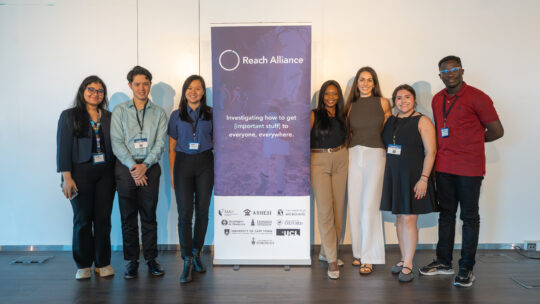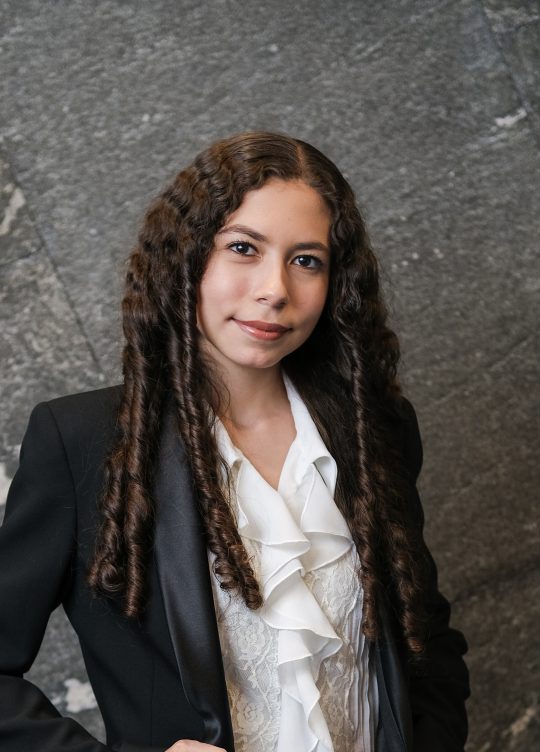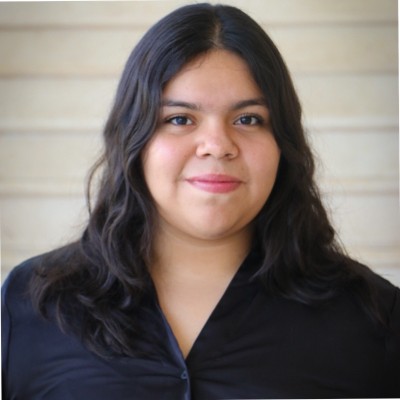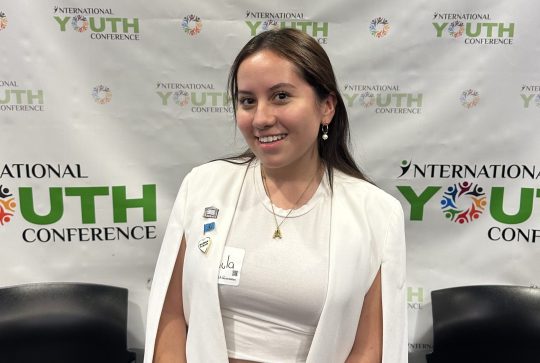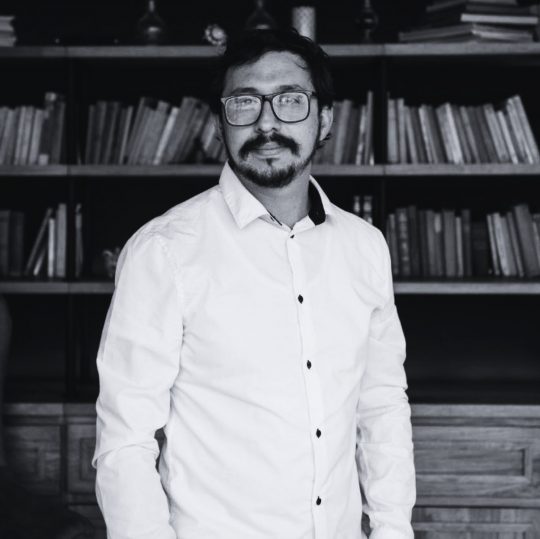Executive Summary
Refugees in Mexico continue to face significant financial exclusion despite legal and policy advances aimed at fostering inclusion. This persistent exclusion limits their ability to fully integrate into society, access formal employment, and improve their overall quality of life. While Mexican law recognizes the right to nondiscrimination and access to financial services, barriers remain deeply embedded in institutional practices and social attitudes.
Forcibly displaced individuals often face rejection when they attempt to open bank accounts or access basic services, even when they present valid identification documents. These obstacles are not only procedural but are frequently reinforced by cultural biases and perceptions that label refugees as high- risk or inherently “other.” The gap between legal guarantees and their implementation is particularly evident within financial institutions, where discretionary practices and a lack of cultural sensitivity hinder efforts to include diverse groups.
We investigated the root causes of these exclusionary dynamics and found that the barriers originate from both institutional procedures and deeper cultural resistance. Following a thorough literature review, we conducted field work in two major urban centres — Monterrey and Guadalajara — known for their strategic importance in refugee reception and local integration programs. We conducted interviews or surveys with a diverse group of individuals, including refugees, representatives from banking institutions, and subject-matter experts, whose perspectives provide a nuanced understanding of how inclusion is either facilitated or poorly managed within a banking culture shaped by institutional discretion and the broader sociopolitical context. While many refugees face rigid or exclusionary practices, some emerging models such as initiatives led by Banco Dondé demonstrate that inclusive solutions are achievable when legal clarity, cultural sensitivity, and institutional will are aligned.
Context: The Rise of Refugee Flows in Mexico
Between 2013 and the end of 2024, Mexico received 638,820 asylum applications of which just over 33 per cent were processed and resolved; around 22 per cent of those were approved with refugee status (see Figure 1). This steady increase over the years suggests that Mexico is no longer just a stop along the way, but a destination where many people are choosing to live.
In 2024, Mexico received 78,975 asylum applications and processed 33,844 of them. Of these, 74 per cent resulted in refugee status and an additional 6 per cent in complementary protection, meaning roughly 80 per cent of applicants received some form of protection. Although applications declined in 2024 compared to 2023, when over 140,000 people applied, the share of positive outcomes increased. In 2023, about 29,661 cases were processed, and 74 per cent resulted in some form of protection.1 This difference, although slight, shows changes in how cases are being reviewed. With more people turning to Mexico for protection, the country’s asylum system is facing new demands. It’s not just about numbers; it’s also about making sure that institutions can keep up and that people get the support they need. This includes access to fundamental rights such as housing, employment, education, or healthcare, which are much easier to meet when refugees are financially included.
Asylum applications received by Comar . Figure 1. Asylum applications, 2013–2024 (individuals) (data from COMAR 2025)Ensuring this inclusion also aligns with Mexico’s commitments under the Sustainable Development Goals (SDGs). Specifically, SDG 8.8 promotes safe and secure working environments for all, including migrant workers, while SDG 8.10 focuses on expanding access to banking, insurance, and financial services for all.
Similarly, SDGs 10.5 and 10.6 call for stronger regulation and inclusive governance of financial institutions. These goals underscore the importance of developing systems that cater to the population’s diverse needs.
To make this possible, however, Mexican society must adapt to a more diverse population and actively address the cultural and social barriers that often prevent refugees from fully integrating and enjoying their rights as new members of the community.
Hardest to Reach: Understanding Financial Inclusion for Refugees
Despite institutional progress, Mexico continues to face significant challenges in achieving financial inclusion. Despite being one of the world’s largest economies, as of 2021, more than half of Mexico’s adult population remained unbanked.2 Migrants, refugees, or asylum seekers, depending on their gender, age, migratory status, ethnicity, or disability, are particularly excluded from banking.3
In practice, they face a series of administrative and operational obstacles that, although not formally established in Mexican legislation, are implemented as requirements in the day-to-day operation of financial institutions. For instance, refugees and asylum seekers are often required to provide documents such as proof of address, high-income statements, or specific forms of identification, even when current regulations would allow them to open an account with valid migration documents. These types of bank- specific bureaucratic “requirements” serve as barriers that restrict effective access to the financial system, undermining the principle of equal treatment and limiting the rights of individuals in vulnerable situations.
Context
Access to Financial Inclusion As a Human Right
Financial inclusion is a critical component of complete social integration. Access to financial services enables individuals to engage meaningfully in various aspects of life, from receiving wages and paying for education, to participating in local economies and planning for long-term well-being. When they are excluded from the financial system, people experience cycles of marginalization and inequality. Therefore, promoting financial inclusion is not merely an economic imperative, but a recognition of a human right intrinsically linked to social inclusion and equity.
Numerous studies underscore the economic benefits of financial inclusion. At a macroeconomic level, increased financial inclusion has been associated with higher GDP growth, lower inequality, and reduced poverty rates.4 At the micro level, inclusion enables individuals to invest in education and health, thereby escaping poverty through access to credit and savings tools.
Formal employment is also closely tied to financial inclusion. Having a formal job significantly increases the likelihood of holding a bank account, which serves as an entrypoint into the broader financial system.5 A bank account not only facilitates the receipt of wages but also promotes savings and access to credit and insurance products. In this sense, formal employment serves as a gateway to other financial services, enabling individuals to invest in their future, protect themselves from economic shocks (such as illness or job loss), and access credit — whether for housing, education, or healthcare.
Why is this population hard to reach
Laying the Legal Groundwork for Refugee Financial Inclusion
Over the past decade, Mexico has progressively recognized the need to support the economic participation of refugees and asylum seekers by granting them specific legal rights. These developments reflect a growing institutional effort to build a framework for financial inclusion — one that aligns with broader commitments to human rights and nondiscrimination.
Timeline of Policy Advances
2011 — Constitutional amendment on human rights. Mexico published a significant constitutional amendment on human rights in the Federal Official Gazette (Diario Oficial de la Federación or DOF). This reform aimed to create a stronger culture of human rights, with human dignity at its core. One of its more critical changes is that all levels of government must respect, protect, guarantee, and promote the human rights of every person in Mexico, regardless of their nationality. So, on a constitutional basis, all forms of discrimination are explicitly prohibited. This obligates the state to ensure marginalized communities have access to nondiscriminatory services, including financial ones — where essentials like bank accounts, credit, and insurance are available to all.
Migration Act. This law stipulates that foreign nationals with regular migratory status can participate in the national economy, thereby ensuring their inclusion in the financial environment. Among other things, it requires the National Migration Institute (Instituto Nacional de Migración or INM) to issue official documents—like the Temporary Resident Card (TRT), Permanent Resident Card (Tarjeta de Residencia Permanente o TRP), and Visitor Card for Humanitarian Reasons (Tarjeta de Visitante por Razones Humanitarias or TVRH) — to certify migrants’ regular immigration status. Asylum seekers can also obtain provisional documents from the Mexican Commission for Refugee Assistance (La Comisión Mexicana de Ayuda a Refugiados or COMAR). These forms of ID authorize legal residence and must be recognized by financial institutions.6
Act on Refugees, Complementary Protection, and Political Asylum. The Act on Refugees, Complementary Protection, and Political Asylum establishes that, given the unique vulnerabilities that refugees face, they must receive prioritized access to the rights and guarantees outlined in the Mexican Constitution and international human rights instruments ratified by the Mexican state. These include the right to receive support from public institutions, access healthcare and education, have previous studies recognized, work in any lawful activity, obtain identity and travel documents from the Ministry of Foreign Affairs, request family reunification, and receive documentation for permanent residency.7
2018 — Publication of the Normative Instructive for the Assignment of the Unique Population Registration Codes (Clave Única de Registro de Población or CURP). The Normative Instructive for the Assignment of the CURP (Instructivo normativo para la asignación de la CURP) authorizes refugee and complementary protection applicants to obtain a temporary CURP after receiving documentation from COMAR. This CURP, valid for up to 180 days, facilitates access to state- provided services, employment in the formal sector, as well as financial services, among others, and may become permanent once refugee status is granted and the INM issues the corresponding migration document.
2021 — Circular 2/2021 Bank of Mexico. Circular 2/2021 sets the rules for how financial institutions — like banks and multiple-purpose financial companies — can offer deposit services. One of the main updates allows financial institutions to issue prepaid bank cards in the national currency to foreigners entering Mexico. These cards enable users to make payments and transfers without needing a traditional bank account. This is particularly relevant for asylum seekers, refugees, and other migrants who may not yet have access to complete documentation because it provides them with a practical and secure way to manage their finances.
2022 — Amendment to Article 115 of the Credit Institutions Act. The amendment to Article 115 of the Credit Institutions Act, published as a decree by the Ministry of Finance and Public Credit (SHCP), seeks to facilitate banking access for individuals with limited documentation. It simplifies identification requirements for low-risk accounts,8 requiring only basic personal information. For foreigners, valid INM-issued documents — such as the TRT, TRP, or TVRH— can now replace more restrictive identification like passports. This adjustment theoretically enables refugees and asylum seekers to access essential financial services. The amendment also required financial institutions to implement monitoring systems for secure transactions. It gave them 12 months from its effective date to update their Compliance Manual and submit it to the National Banking and CNBV.
Lost in Translation: Gaps Between Law and Practice
The TVRH, in particular, is a key document for asylum seekers because it enables them to work legally and access basic services while their immigration status is resolved. Nevertheless, according to Reséndiz Navarro, a researcher at the Guadalajara office of the Nansen Clinic for Refugees and Migrants, there are many practical barriers to the banks’ recognition of this card, especially when foreign individuals have only the provisional document issued by COMAR.9 Andrea Rodríguez, director of the Monterrey office of the Nansen Clinic, echoed this concern, explaining: “A migrant with a humanitarian visa cannot open a bank account because the bank requires an FM3; a document that no longer exists. So, they can’t receive formal payments.” As of August 2010, Mexico’s consular offices ceased issuing FM2 and FM3 migratory forms, but many banks have yet to update their internal requirements accordingly.
Although the CNBV gave banks a one-year deadline to revise their compliance manuals after the 2022 reform to Article 115 of the Credit Institutions Act, it hasn’t conducted any follow-up aimed explicitly at checking whether those changes were made. Instead, it continues with its standard oversight practices, which focus on general compliance — particularly in matters related to money laundering and terrorism financing. In other words, there is no concrete mechanism to verify whether banks have taken steps to align their procedures with the regulatory changes designed to improve refugees’ access to financial services.10 These systemic shortcomings reveal how the lack of clarity in implementation generates financial exclusion that contradicts the law’s overarching goal of inclusion.
Giovani López, a paralegal in the Nansen Clinic in Guadalajara, explained, “We’re all technically trained … but sensitivity gets lost through institutionalization.” Over time, he added, “the refugee becomes a number in the fight for resources.” This shift in institutional culture contributes to inconsistent practices and reduced responsiveness to the vulnerabilities of refugees and asylum seekers.
The newspaper La Jornada reported that the INM reduced the number of TVRHs issued by 97 per cent in 2024 compared to the previous year.11 As Gabriela Paz, deputy director at COMAR’s Guadalajara office, noted in an interview with us, the drop reflects a broader shift in policy that has been unfolding since 2018, when migrant caravans began drawing greater public and political attention in Mexico. As a result, authorities tightened the criteria for granting refugee status, limiting it to those who fully meet the legal definition and have no
COMAR was instructed to apply greater scrutiny when reviewing asylum claims, while the INM was directed to cease issuing humanitarian visas — with no official explanation for why. Given this situation, refugees and asylum seekers are left with only temporary CURPs and other provisional documents issued by the National Population Registry (Registro Nacional de Población or RENAPO) and COMAR. While these serve as a form of identification, they are not recognized as official forms so many asylum seekers are stranded in legal limbo, making it harder for them to access basic services, including financial ones.
Beyond Mexico’s Legal Groundwork
In response to this disconnect, refugee protection agencies, legal clinics, and other key actors have pursued various legal actions, like filing rights-protection lawsuits and submitting complaints to the National Commission for the Protection and Defence of Users of Financial Services (Comisión Nacional para la Protección y Defensa de los Usuarios de Servicios Financieros or CONDUSEF). These efforts are framed within a strictly legal discussion. Still, the persistence of barriers raises the question of what other approaches could be explored to promote financial inclusion.
Figure 2. Mexican Commission for Refugee Assistance (COMAR) in Guadalajara, JaliscoMajor Cities, Major Gaps
Guadalajara and Monterrey are both highly urbanized and socioeconomically important. They also play strategic roles in shaping public policy and becoming a place to settle. Although neither are primary destinations for refugee populations, both cities have made efforts to implement policies that promote more effective social integration. They also serve as essential hubs for collaboration between academic institutions and civil society. And both cities have partnered with Tecnológico de Monterrey and participated in legal clinic projects — previously supported by the United Nations High Commissioner for Refugees (UNHCR the UN Refugee Agency) — aimed at addressing refugees’ legal needs and advancing the protection of their human rights.
Figure 3. Local integration program, Guadalajara, April 2024Both cities are also part of UNHCR’s Local Integration Program (Programa de Integración Local or PIL), which offers refugees the opportunity to settle and integrate into communities across Mexico.12 This initiative supports refugees from their arrival through to naturalization. The UNHCR provides options for internal relocation within Mexico, as well as integration support for refugees, regardless of their place of residence. Since the program’s launch in 2019, over 30,000 refugees and asylum seekers have participated in the relocation scheme, while more than 80,000 individuals have received integration support in their respective host communities.
Fieldwork and Data Collection
We visited 23 banks — eight in Guadalajara and fifteen in Monterrey — across three major banking institutions, referred to here as Bank 1, Bank 2, and Bank 3, to assess institutional
We also interviewed seven professionals in relevant fields: two legal scholars, two experts from institutions focused on human mobility, one economist, and two staff members from the UNHCR. These interviews provided valuable contextual insights into the regulatory, institutional, and economic frameworks that influence refugee financial inclusion. The study also involved surveys and interviews with refugees from various countries, providing valuable first-hand accounts of their experiences with banking access and perceived discrimination. All interview and survey instruments were reviewed and approved by staff from various UNHCR Mexico offices to ensure they met ethical standards, respected the dignity of participants, and aligned with protection-sensitive approaches.
A total of 30 surveys were distributed through the Nansen Clinic’s contact network but only six were completed and returned. This outcome can be attributed to several factors: outdated contact information like phone number changes, limited access to digital devices or internet, and the possibility that completing the survey was not a priority for many participants. We recognize that although the findings may not represent the broader population, they do highlight a clear pattern of financial exclusion.
Figure 4. Geographic layout of the study zones in Monterrey and GuadalajaraFigure 5. Meeting with UNHCR Mexico staff to review and validate interview and survey instrumentsFigure 6. Participation in refugee financial inclusion access survey: 20 per cent response rateIn interviews, we spoke with two refugees from Nicaragua who are actively involved in defending refugee rights and who personally experienced financial exclusion upon arriving in Mexico. These conversations were also made possible through the Nansen Clinic’s network of contacts. Finally, all interviews and survey data underwent a thorough qualitative analysis, which identified key patterns, institutional gaps, and recurring barriers. This approach allowed for a grounded understanding of the systemic challenges and areas of opportunity within the financial sector in urban Mexico.
Impact
Key Findings: How Banks Navigate Refugee Access
Across all locations and zones, banks consistently showed a closed-off attitude toward sharing information. Silence and rejection themselves became part of the finding, revealing a broader institutional reluctance to engage with the issue of refugee access.
In both Monterrey and Guadalajara, none of the bank branches we visited agreed to a formal interview about the process for opening a bank account as a non-Mexican national. While some staff accepted the flyers we brought and, in a few cases, redirected us to a manager, we rarely received concrete answers or clear alternatives. In Monterrey, branches in high-income areas showed slightly more openness, whereas those in working-class zones tended to give short, automatic responses. In Guadalajara, the pattern was similar — some staff were willing to listen, but most still avoided giving specific information.
Across both cities, what stood out most was the general reluctance to engage with the topic at all, revealing a quiet but consistent pattern of institutional distance when it comes to refugee access to banking. In Monterrey the experience was shaped more by the area where the branch was located than by the bank itself, while in Guadalajara this distinction was less pronounced.
To further investigate, we directly requested information about opening a bank account without Mexican nationality, simulating how a person with refugee status might experience the process. This second moment of our fieldwork revealed cultural disparities and a lack of current legal knowledge concerning refugees’ rights. We assessed bank personnel’s openness and attitudes toward refugees by observing their behaviour during interactions. This included analyzing how they reacted when asked about refugee-related topics, whether they were able or willing to provide relevant information, and whether they demonstrated knowledge of essential procedures and rights. In addition to their verbal responses, we observed their behaviour to identify cultural barriers better, specifically:
• Noting signs of discomfort, avoidance, or prejudice when discussing or addressing refugee-related issues.
These indicators were essential for identifying implicit cultural biases and structural barriers that are not always visible through quantitative data alone. Across both cities, bank staff consistently requested documents such as a valid passport and a migration form, even though humanitarian visas and refugee status — issued by the Mexican Commission for Refugee Assistance (Comisión Mexicana de Ayuda a Refugiados COMAR) — are legally sufficient to open a basic bank account. None of the six branches visited in the simulation exercise were able to clearly explain or offer formal alternatives for individuals with refugee status.
When examining staff behaviour and attitudes, we encountered contrasting patterns. In Monterrey, all three banks provided generally courteous attention, and there were no significant changes in treatment after refugee status was mentioned — although answers remained vague or uncertain. In Guadalajara, the differences between banks were more noticeable, but all three showed a subtle shift in attitude once staff realized the person asking for information wasn’t Mexican.
Bank 1 suggested an informal workaround — having someone else open the account on the refugee’s behalf — which, while possibly well- intentioned, raises legal and ethical concerns. Bank 2 made more of an effort: although the staff didn’t know whether it was possible to open an account, they escalated the question to a manager. Bank 3, by contrast, gave a firm “no” from the start and didn’t explore any alternatives. These interactions showed that the barriers refugees face aren’t only legal or administrative; they’re also cultural and emotional.
We noticed changes in tone, body language, and the level of attention staff were willing to offer once we mentioned refugee status. These moments can lead to feelings of frustration, exclusion, or simply not belonging. More broadly, the experience revealed a gap in staff training and a lack of clear institutional procedures — not just for refugees, but for foreign clients in general.
The Economic Viewpoint on Refugees and Financial Inclusion
According to Felipe Abelardo Pérez, director general of the Centre for Financial Access, Inclusion, and Research at Tecnológico de Monterrey, the exclusion of refugees from the financial system not only limits their personal development, but it also carries broader consequences for the economy. In the short term, he explains, refugees without access
He also highlights the regulatory tension banks face: anti-money-laundering laws require
On the Front Lines of Integration: Local Support Organizations
Mireya del Rocío Aguilar works in the social labour reintegration area at one of the most prominent migrant shelters in Guadalajara: Casa del Migrante Scalabrini A.C. She explained
She highlighted that a refugee without a passport faces significant obstacles in accessing banking services, which also affects their employment opportunities. “As a refugee, if you don’t have your passport, you’re blocked from anything related to banking. Job openings are limited because you can’t access certain cards” referring to the way many jobs require specific banking tools, such as payroll cards. She emphasized that banking institutions must adopt a more human and empathetic approach — refugees should not be seen merely as statistics or numbers but as people with complex needs, just like anyone else. At the shelter, their primary focus is to raise awareness among employers rather than banks because refugees encounter repeated rejections and rigid attitudes in the financial sector. The shelter works directly with businesses to secure ethical, non-exploitative job placements, fostering relationships grounded in trust and mutual support. Over time, this approach has led to strong partnerships with companies like Dulces de la Rosa, Cisco, Tecno Office, and May Corporativo.
Mireya also described how workers’ lack of proper documentation can often lead to legal and regulatory complications, including the risk of fines for both individuals and companies. She highlighted the urgency of finding lawful pathways for refugees to access the financial sector.
Supporting Roots: UNHCR’s Point of View
In interviews two staff members from UNHCR (the United Nations High Commissioner for Refugees) identified the widespread lack of knowledge among refugees regarding how institutions function in Mexico. Many refugees are unfamiliar with administrative procedures, legal requirements, and even which authorities or agencies they should approach for assistance. They also raised the difficulty refugees face in receiving and submitting official documentation, which is essential for accessing services such as employment, healthcare, and, most notably, banking. While international treaties and Mexican law formally recognize and protect the rights of refugees and migrants, there is a significant gap between these legal frameworks and their local implementation.
Zayra Huerta, assistant durable solutions officer at UNHCR Mexico, emphasized that administrative issues further hinder refugees’ access to financial services: “The humanitarian residence cards are no longer being issued … without them, there is no way to prove work authorization. Without documents, there is no formal employment or bank accounts.” This disconnection leads to inconsistent practices and, at times, outright denial of services.
UNHCR representatives also emphasized that economic integration remains one of the most challenging areas where discrimination and structural barriers are prevalent. Refugees often face suspicion, additional requirements, or outright refusal when trying to open bank accounts or apply for jobs. Unless they are connected to an official institution or supported by a civil society organization, their requests are frequently dismissed or delayed.
In response to these challenges, UNHCR has initiated efforts to train and sensitize banking institutions across Mexico. Training sessions aim to promote equitable access and reduce discriminatory practices against refugees. However, UNHCR staff acknowledged that reaching every bank and financial institution in the country is a daunting task, especially given the decentralized and varied nature of banking practices.
Despite these limitations, they noted that incremental progress has been made, and in some areas, biases have started to diminish. Systemic change will require not only ongoing institutional training and awareness but also more vigorous enforcement of legal protections and greater coordination between local authorities, financial institutions, and international organizations.
First-hand Experience: Refugees’ Perspectives
In six surveys with refugees who currently hold permanent residency in Mexico, several shared challenges regarding their experiences with the banking system. All the participants emphasized just how essential financial services are not only for managing daily expenses or sending money back home, but also for building stability through saving, accessing credit, or starting small businesses. And yet, despite being legally settled in the country, most said they had to figure things out entirely on their own. There was little to no support or guidance from institutions, and reliable information was often hard to come by.
Figure 7. How participants learned about accessing financial services (survey results)In recent years, financial services have increasingly become indispensable for full participation in social and economic spheres. However, this reality remains insufficiently recognized within the Mexican collective imagination. Moreover, financial services constitute a unique case because despite their basic nature, they are primarily provided by private actors, making them simultaneously an essential resource and, for a significant portion of the population, inaccessible.
Regarding banking institutions’ requirements for opening an account or accessing service, refugees described requiring valid official identification, proof of address, the Unique Population Registry Key (Clave Única de Registro de Población or CURP), the Federal Taxpayer Registry Code (Clave de Registro Federal de Contribuyentes or RFC), and proof of income. However, in most cases, respondents reported that the institutions did not provide viable alternatives to substitute for any of these documents when they were unavailable. One person explained: “In my case, I couldn’t open an account without a valid passport from my country; it had expired, and it’s very difficult to get a new one because of how expensive
Required Documents to Access Financial Services . Figure 8. Reported documents and requirements requested by banks during the process of accessing financial services (survey results)Perception of Discrimination . Figure 9. Experiences of discrimination and perceived nationality-based differences during financial service applications (survey results)and complicated the process is. The bank didn’t offer any way around it.” Half of the people surveyed experienced some form of discriminatory treatment while trying to access financial services. Some felt they were treated with suspicion or dismissed. Most believed they would have been treated differently if they were from another country. This points not only to systemic rigidity, but to a deeper lack of flexibility and empathy within banking institutions.
The survey responses reflect a lack of standardization and institutional sensitivity to the specific circumstances of this population, as well as an urgent need to reassess the criteria for accessing financial products through a human rights and nondiscrimination lens. When asked what changes could help, participants called to make the requirements more flexible and ensure that people with permanent residency are treated the same as Mexican nationals. For the people who shared their experiences, these aren’t just technical fixes — they’re a path to real, lasting inclusion in the country they now call home.
Two Stories Reflecting a Shared Struggle
Two individual refugees generously agreed to share their stories and allowed us to include their names. Their experiences offer a closer look at what financial inclusion means for this population.
When Gabriela Guerra arrived in Mexico in 2018 after fleeing Nicaragua, she believed that securing permanent residency would open the doors to a stable life. In many ways, she was right — she opened a bank account and contributed economically to the country through tax payments and supporting her life. Yet even with her legal status and financial responsibility, the process was fraught with struggle. She still faces repeated demands for her passport (which will soon expire and cannot be renewed), unclear documentation requirements, and the persistent fear that, despite doing everything “right,” she might one day be excluded from the system that now shapes her everyday life.
Reflecting on her experience, she shared: “They ask you strange questions like, ‘Where does your money come from?’ And since I’m not formally employed here, I end up feeling like an alien — not even a foreigner — an alien, like something from another planet. I really don’t like the experience.”
Figure 10. Interview with asylum-seeking journalist Jorge HurtadoBy contrast, Jorge Hurtado, a Nicaraguan asylum seeker who has been in Mexico for only a few months, has not been able to access any financial services. Despite having previous experience with both debit and credit cards in his home country and a clear intention to build a new life, his attempts to open an account were repeatedly denied because he lacked the required documentation. As he told us, “Not having papers limits you in an overwhelming way.” Even FinTechs which are often considered more accessible alternatives, proved out-of- reach due to biometric ID requirements that refugee documents do not fulfill.13 However, when a person already has a FinTech, they can be potential temporary workarounds. For example, Jorge operates a foreign fintech account from Mexico to cover essential expenses such as rent.
In short, most refugees and asylum seekers consistently try to access financial services without institutional backup, resorting to informal advice or trial and error to fulfill complex requirements. Their experiences highlight a broader issue stemming from the inconsistencies within institutions and the limited understanding of the legal and sociocultural realities unique to refugees. Even when some banks show more flexibility than others, the lack of clear protocols and cultural awareness hinders financial inclusion for a group that would otherwise contribute significantly to the economy.
Opening Doors: Promising Practices
Despite persistent challenges, such as xenophobic prejudices, bureaucratic obstacles, or inconsistent policy implementation, some key partnerships have shown that the financial inclusion of refugees in Mexico is possible. One of the most recent examples comes from Bank Dondé, a digital banking entity that, in collaboration with UNHCR, redesigned its systems to make them more accessible to refugees. We spoke to one of the bank’s employees who said: What we did — which was really great — was training both sides (UNHCR and the bank) to raise awareness among all staff. By law, banks should accept refugee documentation, especially after the recent amendment to Article 115 of the Credit Institutions Law, which relaxed ID requirements for basic accounts. But that instruction wasn’t reaching the branches from the executives, so front-line staff still believed it was illegal.
Figure 11. Banco Dondé’s website says that it’s “More than a bank, a driver of change.”Unlike traditional banks, which tend to reject applications when they encounter a lack of identification papers, the institution trained its entire network of over 2,000 employees —including staff at its physical “Fundación Dondé” branches (a pawn shop owned and operated by the same group) — to recognize refugee documentation and adopt a trauma- informed approach. This intervention included clarifying legal ambiguities and empowering front-line workers to act as allies rather than gatekeepers.
The same was done on the UNHCR side, training their staff so they could help refugees open accounts directly, without needing to go to a branch. This model, which combines legal advocacy, institutional training, and flexible digital infrastructure, illustrates how systemic change can occur when financial institutions align their operations with humanitarian goals. As Bank Dondé’s public statements note, this initiative isn’t just about compliance; it’s about recognizing refugees as “clients with potential” who contribute to local economies.14
UNHCR has established similar alliances with other banks in Mexico. These collaborations seek long-term integration through financial inclusion. BanCoppel was the first financial institution in Mexico to formally accept INM- issued identification as valid documentation for refugees and asylum seekers, offering financial services in more than 1,100 branches across the country. The bank joined UNHCR in early 2020 to support the inclusion of refugees through simple and accessible financial products. This collaboration strengthened the Local Integration Program (Programa de Integración Local or PIL) of UNHCR, which also backs access to employment, housing, and social services in states like Jalisco and Nuevo León.15
Banorte, meanwhile, joined the PIL in 2022, allowing refugees to open bank accounts on its platform “Enlace Digital,” an online service that allows fast and safe account creation as well as immediate access to a physical debit card. This initiative has not only facilitated formal employment and the rights that entails but also integrates refugees in the taxation system and in Mexican Social Security. Thanks to programs such as the PIL, by March 2022 over 18,000 refugees had been formally employed through the initiative, contributing an estimated 105 million pesos annually in taxes and social security payments.16
However, such successes remain exceptions. Scaling them requires replicating their willingness to decentralize decision making (e.g., trusting branch staff to exercise discretion) and embed inclusion into corporate culture — lessons that many banks could adopt. Expanding these partnerships to address lingering gaps, such as credit access or combating nationality-based discrimination could be the next frontier. As Jorge Hurtado, a Nicaraguan asylum seeker, emphasized, “Banks are missing a massive opportunity by ignoring us.” Initiatives like those of BanCoppel, Banorte, and Dondé prove there’s a better way.
Lessons Learned
From Vision to Action: Recommendations for Change
The inclusion of refugees in Mexico’s financial system is an administrative challenge but it’s also shaped by deep cultural and structural barriers across multiple institutions. Throughout our fieldwork we heard five key takeaways.
Reframe refugees as financially viable clients. Many financial institutions remain hesitant to offer their services to refugees, often because of an assumption that they are high-risk clients. However, as UNHCR and actors in the financial sector pointed out, formally including refugees is economically beneficial. Their participation contributes to the tax base and offers an uncharted market for financial institutions in Mexico. For example, the director of the Centre for Financial Access to Inclusion and Research at TEC de Monterrey recommended creating tailored financial products and programs that include more flexible requirements. Showcasing refugees’ reliability as clients can reduce institutional mistrust and challenge the stigma surrounding them.
Cultural sensitization and continuous training within institutions. Shelter organizations call for continuous sensitization to migration issues, with a particular emphasis on refugee rights and human rights. Even the bank we were able to interview called upon this need. Cultural barriers often stem from a lack of understanding or fear of “the other.” Institutional training shouldn’t be a one-off initiative; it should be ongoing and designed to ensure that front-line staff recognize the legitimacy of refugees’ documents and needs.
Inclusive administrative practices. Recommendations from legal advocates and shelter organizations stress the importance of inclusive protocols, especially in the documentation and registration processes. For instance, collaborations with consulates to issue nationality certificates can help refugees avoid bureaucratic dead ends. Inclusion means refraining from asking for more than what the law requires, particularly for those who already hold permanent residence.
Translate national policy into local contexts. Interviewees from all sectors emphasized the need for national financial inclusion policies to be tailored to local contexts. Without proper coordination, good policies can — and will — remain on paper. Strengthening inter- institutional roundtables and local programs ensures that refugees benefit from systemic protection beyond Mexico City or border zones.
Challenge paternalistic models with empowerment and autonomy. From the legal sector and clinics, we learned the importance of empowering refugees not only through legal action but also through autonomy and self- determination. When they are equipped with legal knowledge — for example, in the form of accessible guides — refugees can navigate the system themselves. This approach challenges paternalistic models and reframes refugees as rights holders, capable of interacting with institutions on their terms, like any other member of the community.
Looking Ahead
Access to financial services is not merely a technical or administrative matter — it is a fundamental component of the right to a dignified life. Ensuring this access is essential for exercising a range of other rights, including the right to work, housing, social security, and legal identity. Without financial inclusion, many of these rights remain out of reach, especially for vulnerable populations such as refugees and asylum seekers. While the legal framework in Mexico — and international law — recognizes the importance of nondiscrimination and equal access, a critical gap remains between legal norms and daily practice. Training programs and awareness campaigns have been implemented for institutional actors, such as banks, often with support from UNHCR and civil society organizations. However, their impact is limited if the lessons learned are not consistently applied or are forgotten over time because of staff turnover or a lack of institutional continuity.
This disconnect underscores the pressing need to align practice with legal obligations. Beyond technical training, what is required is institutional will, targeted regulatory reform, and a broader cultural shift that reframes how refugees are perceived — not as risks or exceptions, but as rights-holders and potential contributors to society. Financial institutions that serve as gatekeepers to economic and social integration have a substantial responsibility. Their role in ensuring compliance with nondiscriminatory practices and in upholding the spirit of the law is pivotal. Without their full engagement, legal protections risk remaining symbolic rather than transformative. A sustainable solution will require inter- institutional collaboration, enforcement of existing laws, and a shift in both mindset and practice. Only then can financial inclusion become a lived reality for all and not just a legal promise.
Acknowledgements
We thank the Reach Alliance and its entire team for making this case study possible. A special thank you to Moni Kim for her admirable work reviewing our progress, and to Chanel Ramcharran, our coach, who was always there for us. She helped us grow as a team and reminded us that collaboration can create something truly special. We are also grateful to Jacqueline Larson for her support with editing.
We especially thank Javier Contreras, our faculty mentor, who encouraged us to believe in ourselves, in our work, and in its potential to make a real impact. Ana Fierro and Iza Siller also provided guidance on our Reach journey.
To the Nansen Clinic and its collaborators, we are deeply grateful. It’s not only a space many of us have learned from, but also a project that continues to stand out for its
Thank you to the team at UNHCR Mexico — Nancy, Iliana, Karam, Zayra, Ana Guadalupe, Emilio, Guillermo, Analilia, and Mariana — for helping us prepare for the field. We also thank those who took the time to answer our survey, our incredible interviewees Gabriela Guerra and Jorge Hurtado, and the many field experts who generously shared their knowledge. Gabriela Paz from COMAR was a generous ally, and Felipe Abelardo Pérez from the Centre for Financial Access, Inclusion, and Research at Tecnológico de Monterrey helped us understand the broader implications of financial inclusion. Mireya del Rocío Aguilar from Aldea Arcoíris is truly a first responder, supporting refugees every step of the way and sharing her valuable insights with us. Isabella from Bank Dondé showed us all that there are better ways. Thanks also to Andrea Rodríguez, director of the Monterrey Nansen Clinic, and to Giovanni López, paralegal of the Guadalajara Nansen Clinic, for contributing their experiences.
Finally, we want to acknowledge each other for becoming teammates, friends, and fellow learners.
Contribution Contributor (initials) Conception or design of the work APAA, BYGR, MJLL, MSMP, IDRR & LGSC Data collection APAA, BYGR, MJLL, MSMP, IDRR & LGSC Data coding MSMP, with contributions of APAA, BYGR, MJLL, IDRR & LGSC Data analysis and interpretation APAA, BYGR, MJLL, MSMP, IDRR & LGSC Drafting of the case study report APAA, BYGR, MJLL, MSMP, IDRR & LGSC Critical revision of the case study report MJLL, with contributions of APAA, BYGR, MSMP, IDRR & LGSC Final approval of the version to be submitted APAA, BYGR, MJLL, MSMP, IDRR & LGSC
